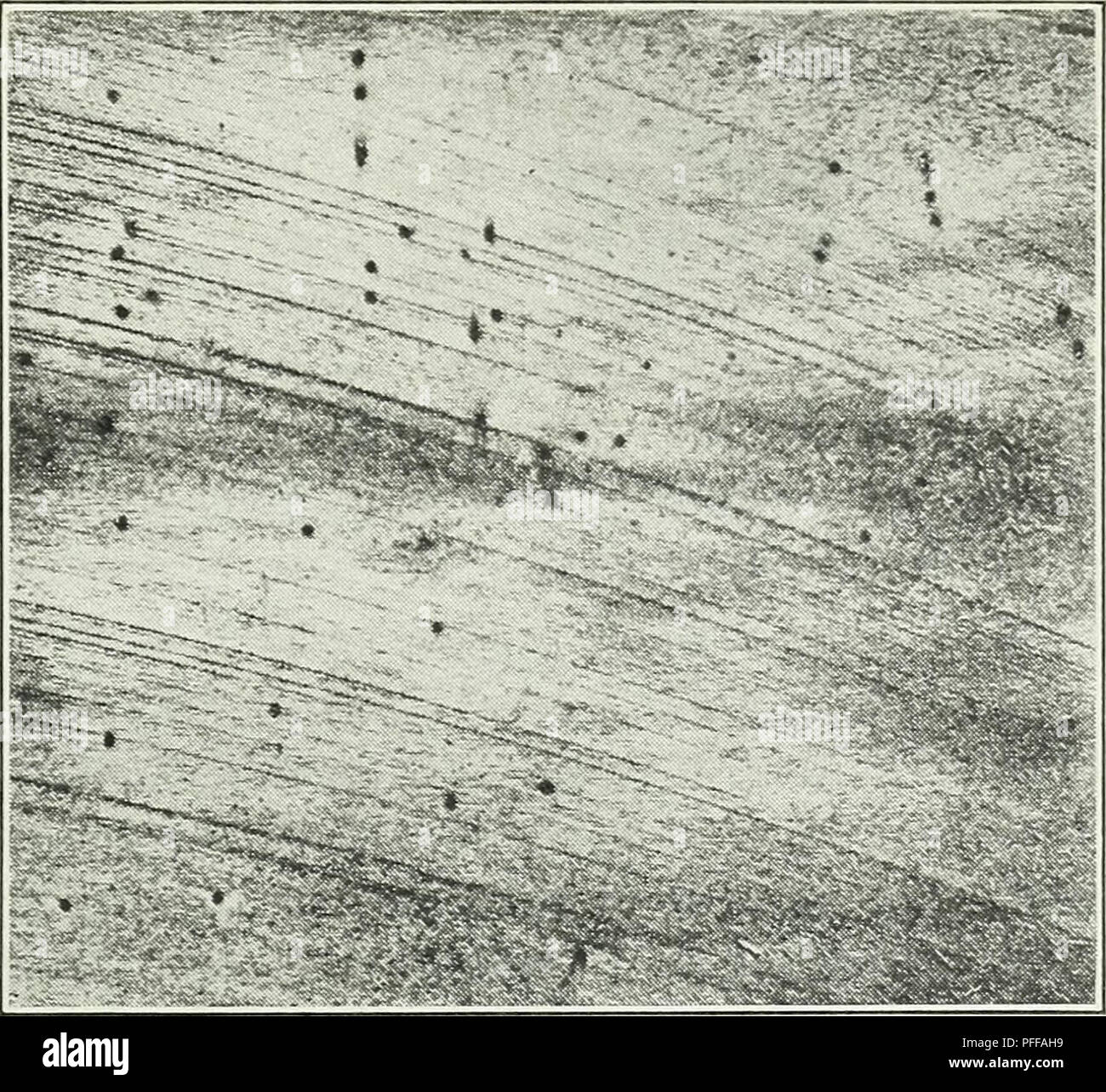. Defects in timber caused by insects. Wood; Forest insects. DEFECTS IN TIMBER CAUSED BY INSECTS 9 The larvae of some types of ambrosia beetles excavate side gal- leries at right angles to the gallery made by the adult, which tun- nels into the wood to deposit eggs; other types excavate no side galleries. Some holes are clear; others are stained black by the action of fungi, some of which the beetles cultivate for food in their. Fig. 7.—Pinholes caused by ambrosia beetles in heading and tight cooperage in South Carolina. Please note that these images are extracted from scanned page images that

Image details
Contributor:
Central Historic Books / Alamy Stock PhotoImage ID:
PFFAH9File size:
7.1 MB (638.1 KB Compressed download)Releases:
Model - no | Property - noDo I need a release?Dimensions:
1649 x 1514 px | 27.9 x 25.6 cm | 11 x 10.1 inches | 150dpiMore information:
This image is a public domain image, which means either that copyright has expired in the image or the copyright holder has waived their copyright. Alamy charges you a fee for access to the high resolution copy of the image.
This image could have imperfections as it’s either historical or reportage.
. Defects in timber caused by insects. Wood; Forest insects. DEFECTS IN TIMBER CAUSED BY INSECTS 9 The larvae of some types of ambrosia beetles excavate side gal- leries at right angles to the gallery made by the adult, which tun- nels into the wood to deposit eggs; other types excavate no side galleries. Some holes are clear; others are stained black by the action of fungi, some of which the beetles cultivate for food in their. Fig. 7.—Pinholes caused by ambrosia beetles in heading and tight cooperage in South Carolina. Please note that these images are extracted from scanned page images that may have been digitally enhanced for readability - coloration and appearance of these illustrations may not perfectly resemble the original work.. Snyder, Thomas Elliott, b. 1885. Washington, D. C. : U. S. Dept. of Agriculture